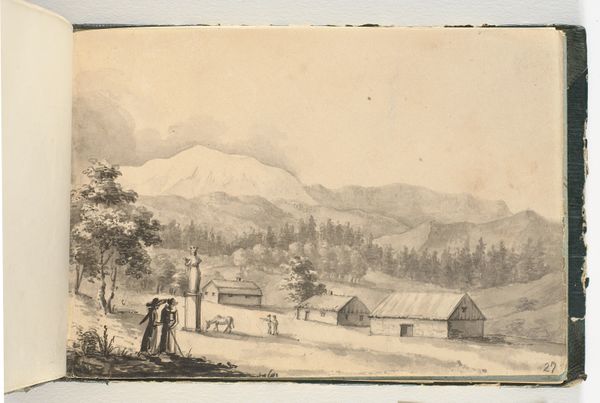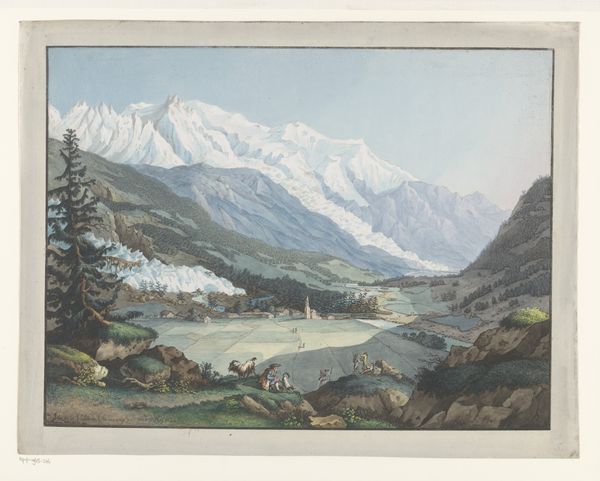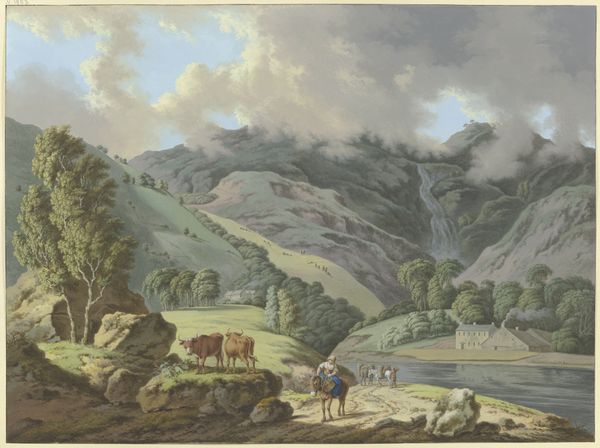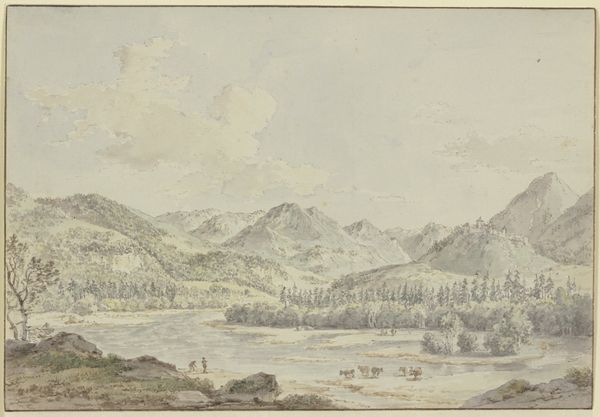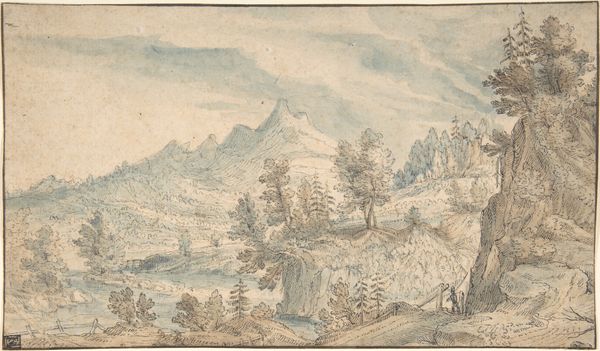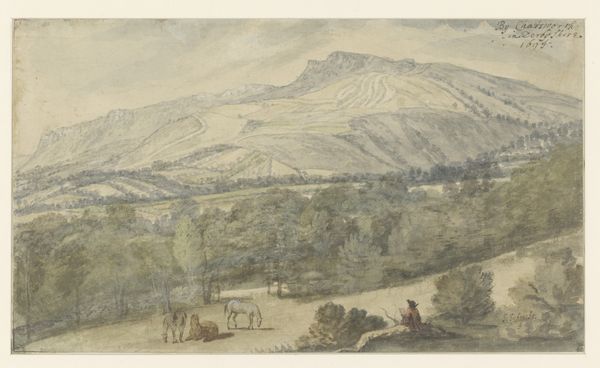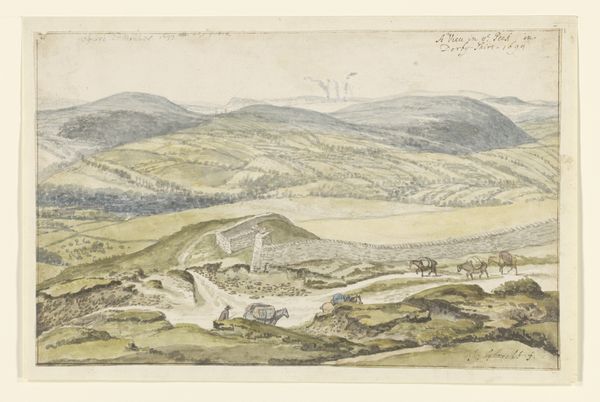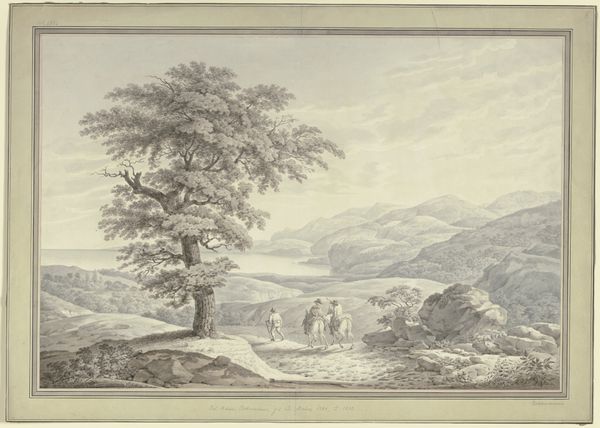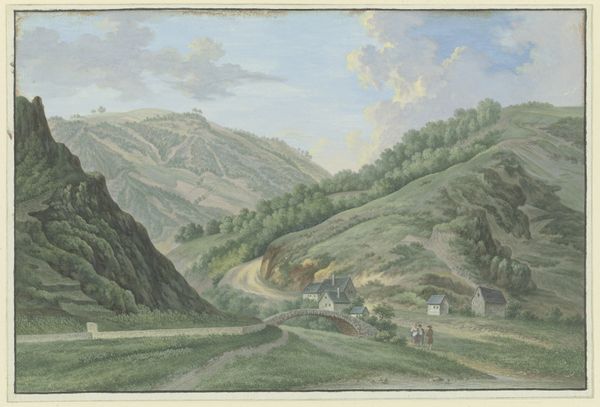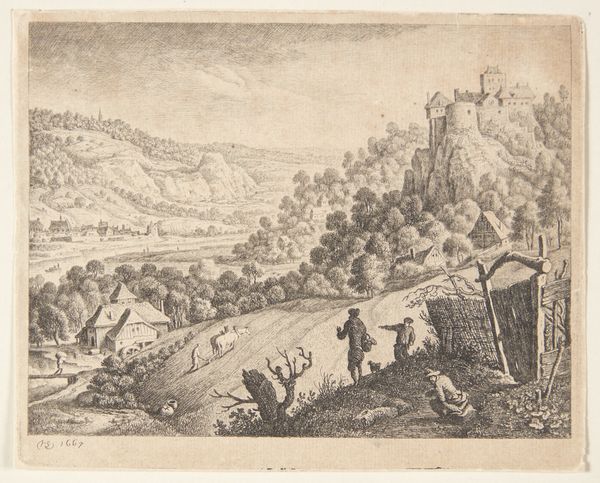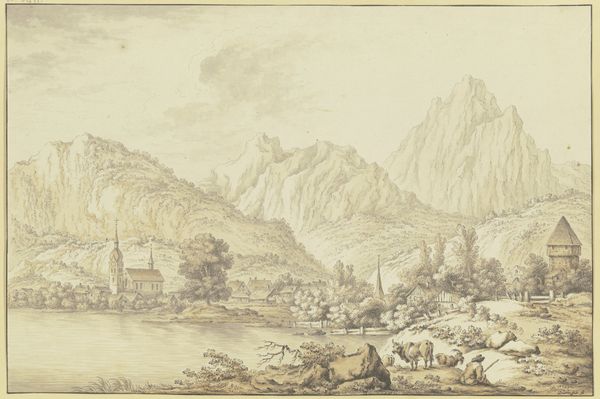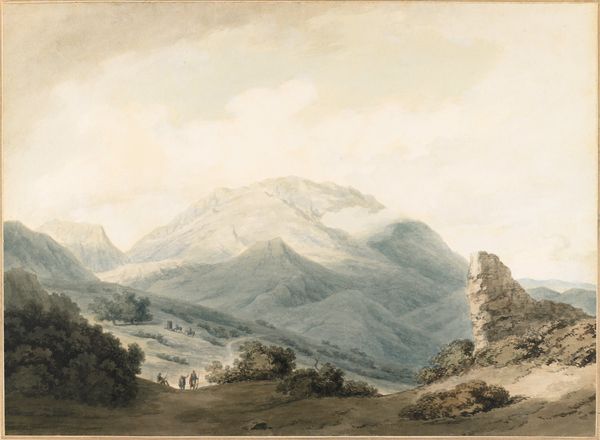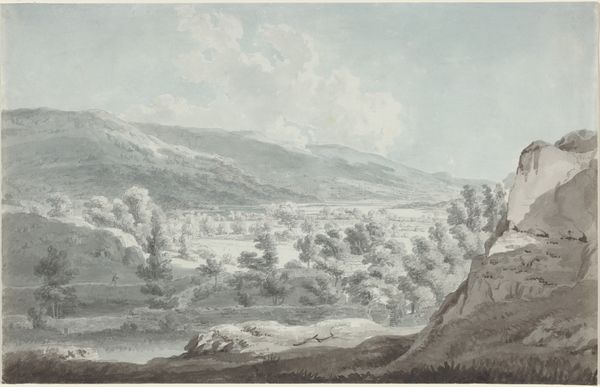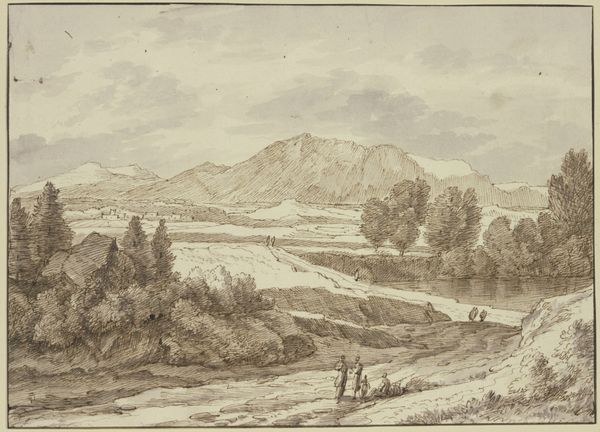
drawing, plein-air, watercolor, pencil
#
drawing
#
water colours
#
plein-air
#
landscape
#
watercolor
#
pencil drawing
#
coloured pencil
#
pencil
#
watercolor
Dimensions: height 306 mm, width 420 mm
Copyright: Rijks Museum: Open Domain
Curator: Looking at J.C. Zick's "Valley of a River with Villages and Mountains" from 1775, one immediately notes its vastness and delicate execution in watercolor and pencil. The layering of hills leading up to snow-capped mountains creates a sense of depth and invites a discussion about its historical context. Editor: My first impression is one of tranquility. It's as if the muted tones and airy composition capture a moment of pastoral calm. But there's also something a bit… restrained? I want to know more about Zick's process. What was he using for pigments? How did those materials relate to the economics and culture of landscape painting at that time? Curator: It's believed to have been done "en plein-air," capturing the immediate surroundings. We might think about how the burgeoning scientific inquiries of the late 18th century, including mapping and geography, influenced landscape painting. The scene reflects both an aesthetic appreciation of nature and a surveying gaze—a literal laying out and owning of land. We should also consider this view of the natural world through the lens of colonial expansion. Editor: Exactly! Were the raw materials locally sourced or imported? Pigment manufacture and availability profoundly impact an artist’s options. It is interesting that the choice of materials could speak to trade routes and the growing global economy and perhaps something to say about how the raw materials from other countries end up representing an idea of sublime European nature? Also, what kind of pencil and paper? Each tells us something about class, labour, and the economics of artmaking in 1775. Curator: Fascinating perspectives, shifting away from what we 'see' in the image towards the hidden material and structural histories behind the creation of landscape as both a geographical and pictorial form. What about those tiny figures down the hill? Are they staffage elements to highlight the grander landscape, or are they placed there to convey a sense of everyday rural life? Editor: Probably a bit of both, no? Their garments, although simple, hint at social relations and the local textile industries of that time, suggesting that clothing and the labor surrounding cloth production may be represented through a choice of dress depicted. Their very presence reminds us of the communities tied to that land and their means of survival. Curator: Well, by thinking about gender, class, race, and access, alongside those elements, we have a fuller story to tell. Thanks! Editor: Likewise, understanding material use alongside your work in representation and context can radically expand our understanding of landscape, of what we consider landscape at all.
Comments
No comments
Be the first to comment and join the conversation on the ultimate creative platform.
